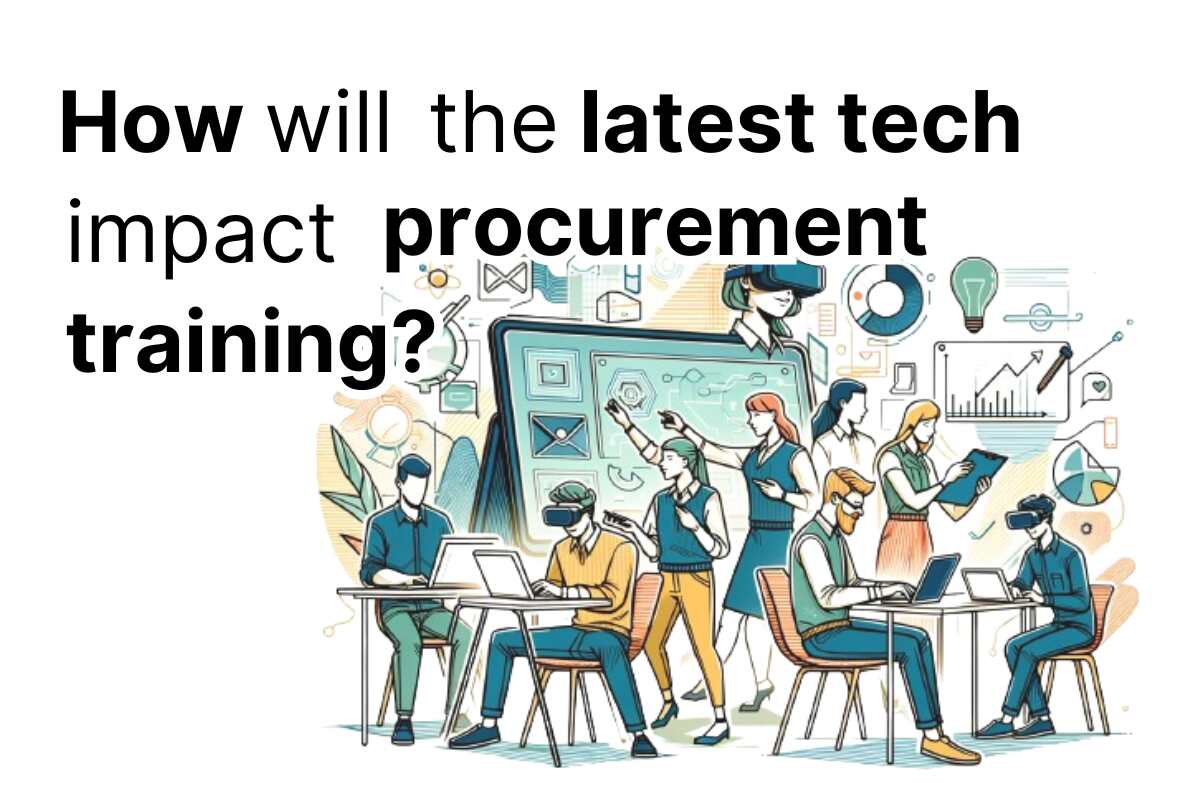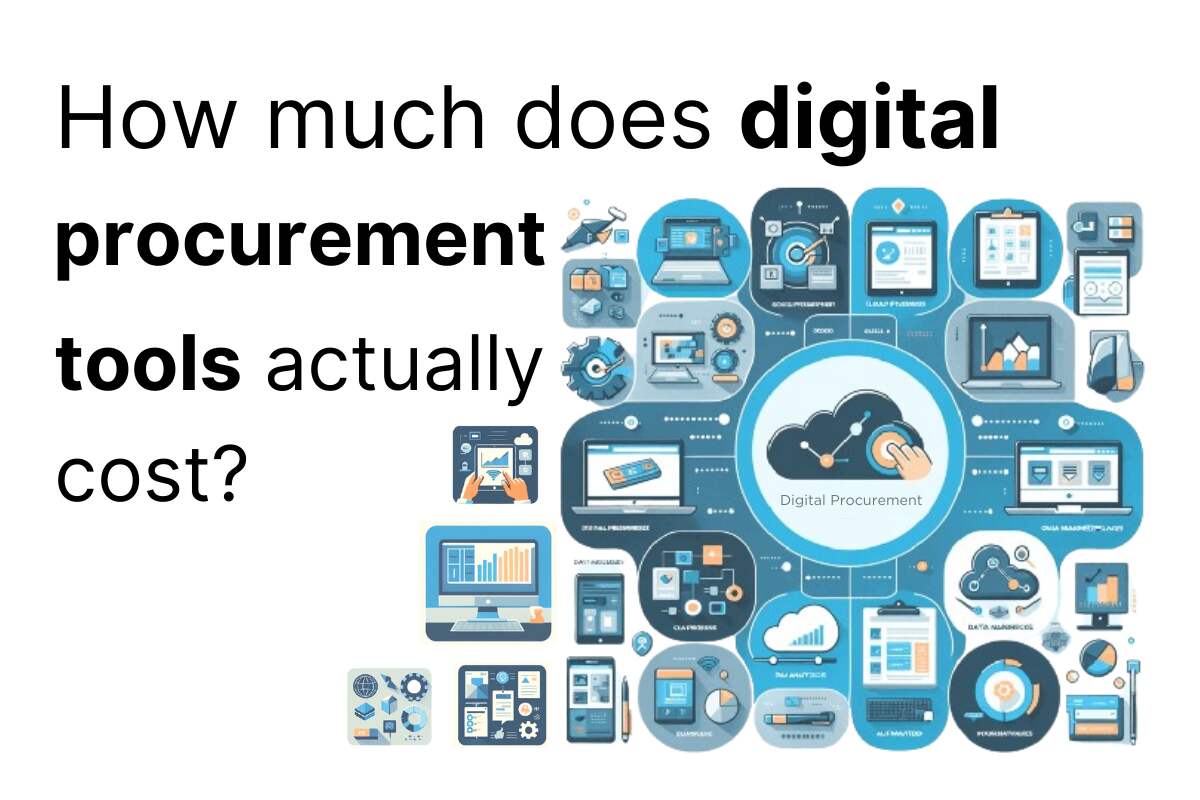This blog post is based on a video interview I gave about digital procurement back in January in Dubai with Dr. Muddassir Ahmed of SCMDOJO.
He’s a friend of the site, who’s also featured on an episode of The Procuretech Podcast.
Why procurement technology’s growth is not with enterprise suites
Procurement technology is no longer the sole preserve of large enterprises.
As a function, Procurement is often underestimated or misunderstood by CEOs.
But current pressures are making it harder to ignore. Indeed, in the current inflationary environment, it’s procurement that has real power to move both the top and bottom line.
Therefore, now is the time for all businesses to embrace the benefits of digital procurement software. This is especially true of smaller businesses, or those based in emerging markets, who may not yet have embraced digital transformation.
The current procuretech state of play
Procurement is about a decade behind the rest of the organisation, in terms of technology investment. Other functions like HR or Finance have had their time in the limelight, but investment in procurement has traditionally been lacking.
Until a few years ago, this lack of investment was reflected in the choice of digital procurement solutions available. Large-scale, all-in-one suites from long-established companies dominated the market. But these suites often failed to match the needs of a modern business.
Today, a new wave of targeted, best-of-breed solutions is emerging. With easier integration, more affordable pricing plans, and laser focused use-cases, these new solutions are much more attractive to smaller businesses, or those in up-and-coming markets.
Why digital procurement matters for SMEs and emerging markets
Whether it’s in the UAE, Egypt, Pakistan, Turkey, or India, businesses in emerging markets may not yet have considered investing in procurement technology.
Unlike their counterparts in Europe or North America, these businesses have been able to benefit from cheaper labour, which means there’s been less of a business case for investing in something like a P2P suite.
But getting on board with digital transformation no longer means investing in one big software solution. And it no longer means having to bear heavy costs for consultancy over implementation and integration with your existing systems.
Smaller, targeted solutions can add value to your business in many ways. Whether it’s visibility over your processes, enhancing your data, or contract management software. There are now many avenues for moving the needle without a hefty investment.
Ensuring ROI with best practice procurement tech strategy
Of course, software can still be implemented badly.
Naming no names, it’s safe to say that some companies have spent a fortune on procurement technology and not seen the ROI they hoped for.
So what went wrong? And how can you ensure returns on your digital procurement strategy?
Change management is key. It’s no use buying into a new eProcurement solution, but not bringing your procurement professionals with you. Communication is crucial!
But choice of tech matters even more. If your new solution is clunky, outdated, or complicated to use, it’s going to create resistance. Or, in the worst cases, run the risk of not being used at all!
Differentiating between procuretech solutions
The post-COVID landscape has seen an explosive growth of procurement software.
With tech solutions popping up like mushrooms, telling them apart can be a challenge. So how do we differentiate between the products on offer? And more to the point – why would anyone want five different pieces of software, when one suite could cover it all?
Sadly, the idea of one suite for every purpose is a fallacy. Even those solutions boasting to offer this usually don’t cut it, once you scratch the surface. They’re often prohibitively expensive, difficult to get up and running, and far too complicated for the average employee to use.
User experience is the vital differentiator when it comes to choosing tech. Businesses should invest in solutions that their people actually want to use. The best options should provide consumer-grade user experience, like we’re used to from the mobile apps we use daily.
How many procurement tools does a company need?
If one suite won’t cut it, then just how many tech solutions does the average business need?
If we’re talking about businesses around $100 million in revenue and above, three solutions should be a minimum, and five is not at all unrealistic.
Let’s break that down.
Any businesses should need a solution for procure to pay, e-Sourcing or contract software, and then something to cover spend analytics.
Then, going into the supply chain side of things, there’s inventory management, transportation, planning, inventory optimisation…And that’s without thinking about ERP.
To run a supply chain right now, it’s going to get intricate and complicated if you want to digitalise right, but this is the journey we have to take.
Have a roadmap for your procurement transformation journey
If you want to do things right, it’s important to start with clearly defined goals.
- Where do you want to be?
- What’s your biggest challenge?
- Where can procurement technology have the biggest impact for your specific organisation?
Be selective and discerning in identifying your unique needs, issues and pain points.
DO NOT simply copy strategies that you’ve observed from large enterprises. They have resources to burn, and can take risks that smaller companies simply can’t afford. What works for them could be a terrible idea for your company.
The best-of-breed marketplace offers a wealth of choice, with tailored solutions for all kinds of specific challenges. Get the most out of this by seeking out software that neatly fits your specific needs and objectives.
Evolution of procurement tech for SMEs and emerging markets
SMEs and businesses in emerging markets have a lot in common.
As an area that’s still very greenfield, tech for SMEs is going to be the next big growth area.
Real innovators are already pushing things forward, with digital procurement systems designed for emerging markets and SMEs. Anyone who’s focused strictly on enterprise as a sales strategy is set to struggle in the months and years to come.
Let’s say, for example, that you’re running a medium sized distribution company or logistics company, and you’re looking to get something like your freight procurement under control. There are ways that you can digitise your sourcing and your invoicing pretty cheaply.
With a budget of $10,000-$20,000, you could easily get some bare bones tech that will still take a lot of administrative work away. There are so many companies offering affordable solutions for P2P, contract management or sourcing that we couldn’t possibly name them all.
If you use our Software Finder, and filter the solutions for those targeting SMEs or mid-size businesses, you’ll find an absolute plethora of them.
Why not build workflows yourself?
We’ve seen a recent growth in no code workflow platforms like Power Automate from Microsoft, or Process Street.
Considering that there’s a clear process flow in procurement (From RFI, RFI, RFQ and RFPs, to PO generation) why should anyone buy numerous software solutions to automate their workflow?
Wouldn’t it be easier to use a no-code workflow platform to design that workflow themselves?
Unfortunately not.
Even simple workflow solutions like Zapier are too complex for the average user. If you don’t have basic programming experience, or your brain just isn’t wired to understand techie stuff like this, you’ll find yourself lost quickly.
It could be that we’ll see this get easier in future. There are some interesting projects on the horizon.
But for now, the user experience and accessibility just isn’t there. And as a result, no-code workflow solutions simply aren’t yet viable for mass adoption.
Give it five years though, and we could see a very different picture.
Conclusion and takeaways: procurement tech for SMEs and emerging markets
So, what should be considered if you’re looking to invest in digital procurement tools?
- Procurement technology is becoming a necessity for modern business – regardless of size, and regardless of geography.
- Reactively following large enterprises into adopting full suites is a mistake. These organisations can afford a months-long consultancy project. Yours probably can’t. Instead, SMEs and businesses in emerging markets need targeted, affordable, best-of-breed SaaS solutions which pay back in months and can be implemented in weeks.
- There’s a confusing wealth of options, but you can differentiate by having clear niche-specific goals in mind, and by prioritising software with strong UX that enables and excites your procurement pros.
- No-code workflow tools are currently too complex and relatively immature for wide adoption. But smart solutions in this space are in the wings, and we could see them in the next few years…
So watch this space!
Be sure to keep ahead of the game on the latest tech solutions with our Software Finder.
And extra thanks to Muddassir for hosting this conversation and asking such great questions.


